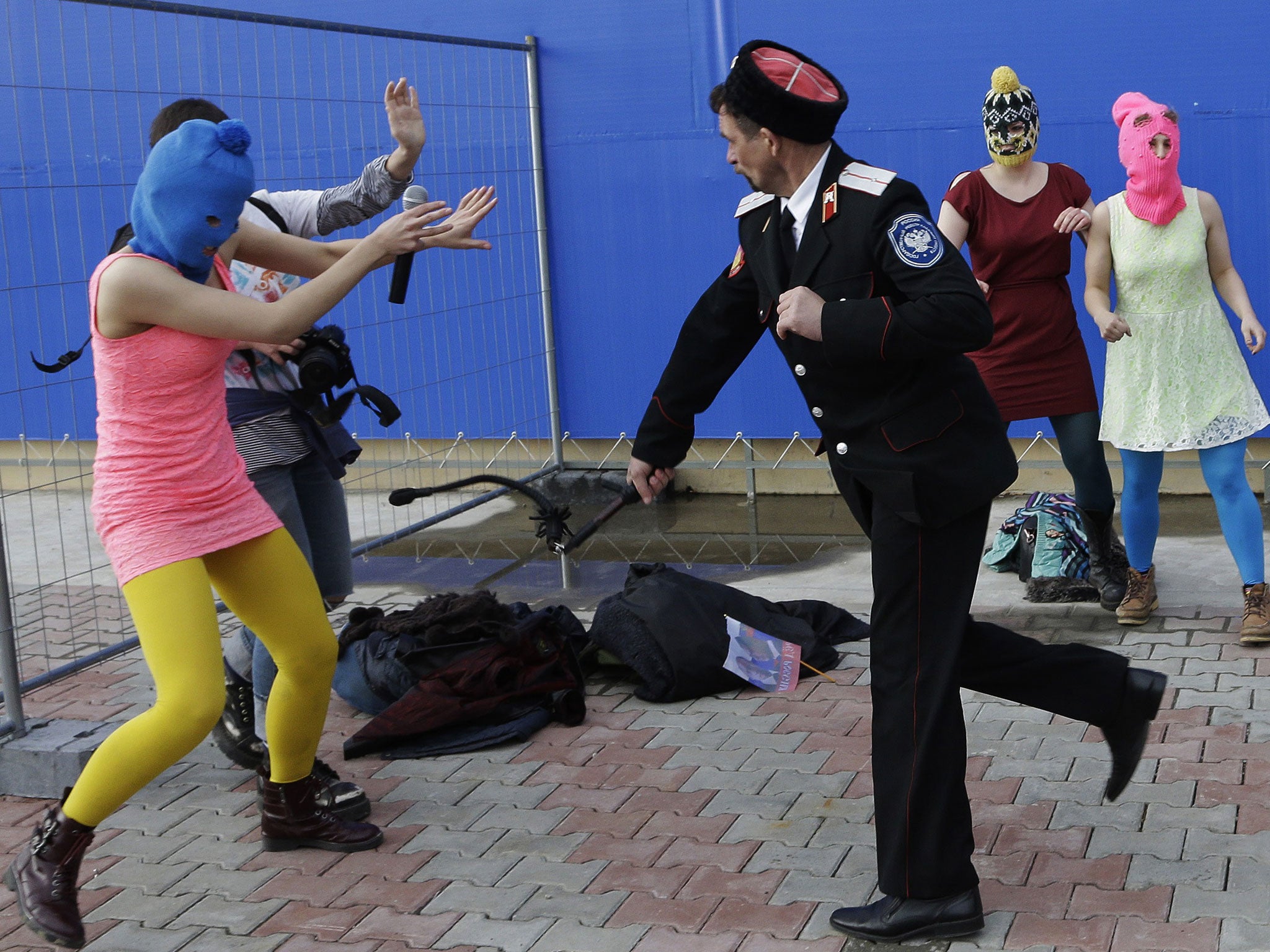Cossacks using whips to clear members of Pussy Riot off the streets of Sochi? Who are these brutal enforcers?
The militia patrolling the streets of the Winter Olympics host city have a long history

The shocking footage of the brutal treatment meted out to members of Pussy Riot in Sochi today has dramatically changed the image we have of Cossack soldiery. For many, the term Cossack evokes memories of the circus, and stunning displays of horsemanship. Cossack dance troupes have wowed audiences around the world with their brilliance and amazing physical energy.
A romance attaches to Cossacks – they captured the imagination of Byron and Tennyson – and they are subsequently seen as free spirits, resistant to authority. The word Cosac was originally an old East Slavic word for “free man”. But there is a history of militarism to this people that renders their involvement in the supressing of protesters not entirely unsurprising.
It is generally believed that the Cossacks originated in the Ukraine in the 13th century, emerging as the Turkish Cumans’ power in the region gradually declined. Some historians say that Cossacks were a mixture of Russian, Ukrainian, Turkish and Tatar settlers; others that they were descended from the Cumans. Nevertheless, the practise of initiating outsiders as Cossacks means that they are defined more as more of a social group than an ethnic one.
Cossacks have a long history of serving the Russian state. A largely militaristic society, they were first engaged by Russian rulers to defend against the invading Tatars in the middle ages. Thereafter, they were often at the core of the Russian military, predominantly as cavalry units, where they gained a widespread reputation for their ferocity.
During Napoleon’s invasion of Russia in 1812, the Cossacks were integral to slowing his advance. Using light cavalry tactics to harass supplies and communications, this is thought to be one of the first uses of modern guerrilla warfare. Later that century, they took part in one of the more sinister chapters of Russian history, playing a forceful role in the anti-Semitic pogroms, the last of which took place in the early 1900s.
When civil war broke out in 1917 between the Tsar’s White Army and the Bolshevik Red Army, Cossacks fought on both sides. Nevertheless, following his victory, Lenin initiated a policy of “Decossackization”, killing at least 300,000 of the 3m strong Cossack population in just one year. Many more died from famine or starvation in the gulags.
In 1936, the ban on Cossacks entering the Red Army that had been put in place by the Soviet government was lifted, and by the end of the Second World War, 17 Cossack corps had been created. Later reduced to eight, their distinction in battle led to these units being merited as Guards units, formally recognising them as elite.
Yet many had fought on Germany’s side, hoping to be rewarded with an independent Cossack state once the war was over. Following Germany’s defeat, many Cossacks looked to Britain, but in the infamous Betrayal of the Cossacks, they were handed over to the Soviet authorities. Between 40,000 to 50,000 more were subsequently repatriated to the Soviet Union, where many were imprisoned or executed
Nowadays, the Cossacks (formally known as the Registered Cossacks of the Russian Federation) are a paramilitary organisation, whose peacetime duties largely revolve around the conservation, protection and restoration of forests, providing aid during natural disasters and emergencies and educating children on patriotic values. During the Winter Olympics they are acting as an informal police force and adding a decidedly sinister tinge to the term Cossack.
Join our commenting forum
Join thought-provoking conversations, follow other Independent readers and see their replies
Comments